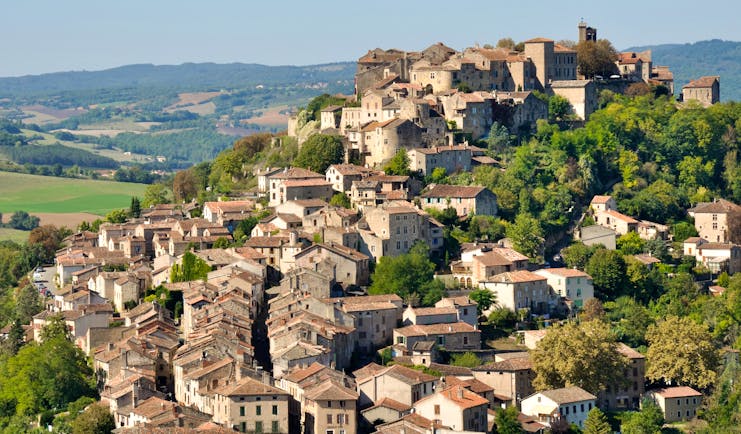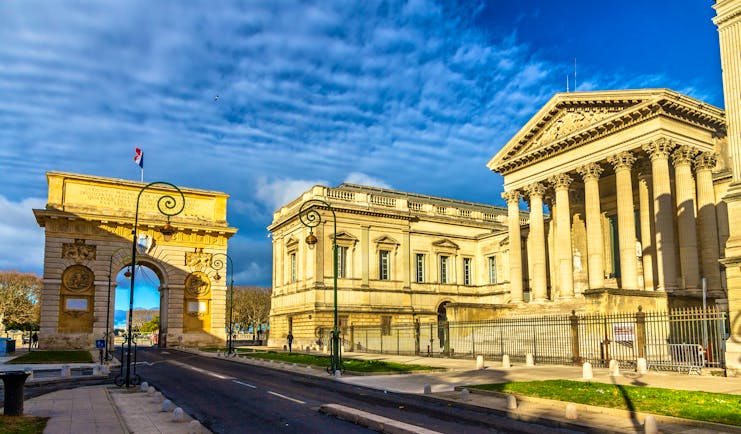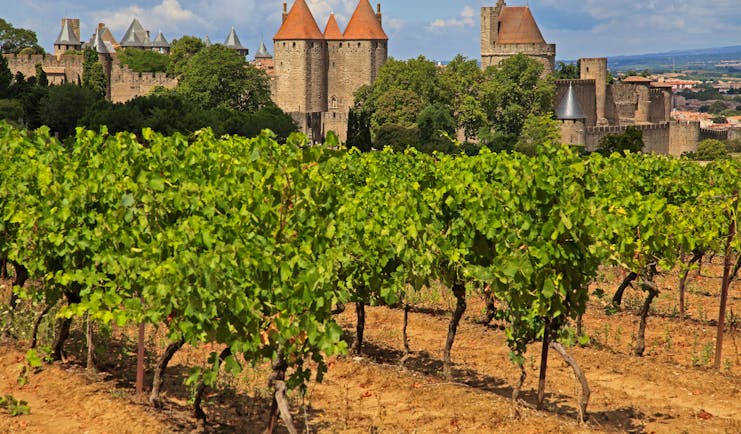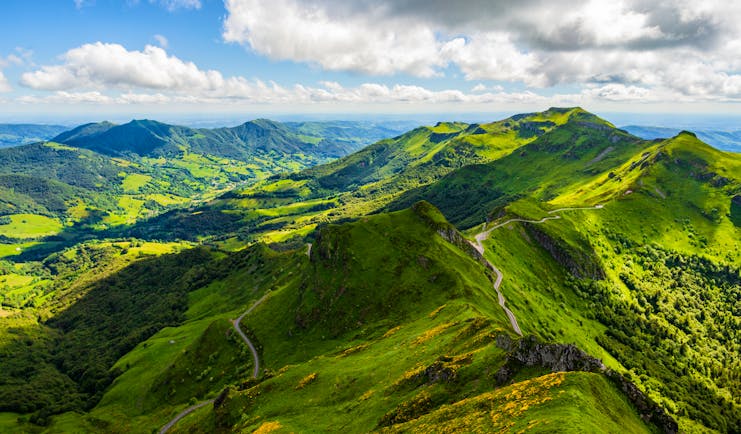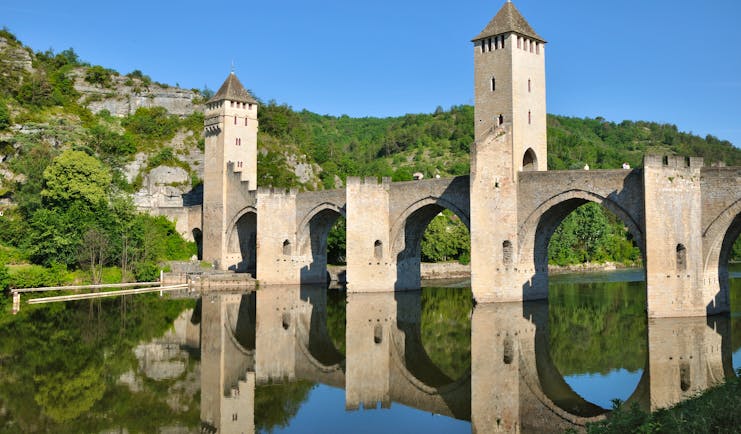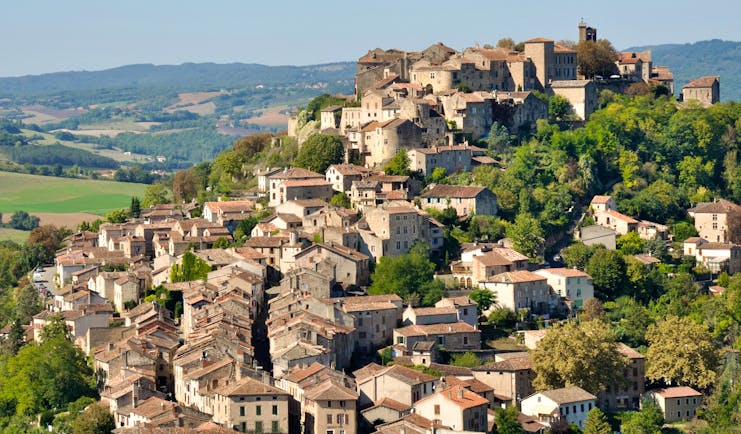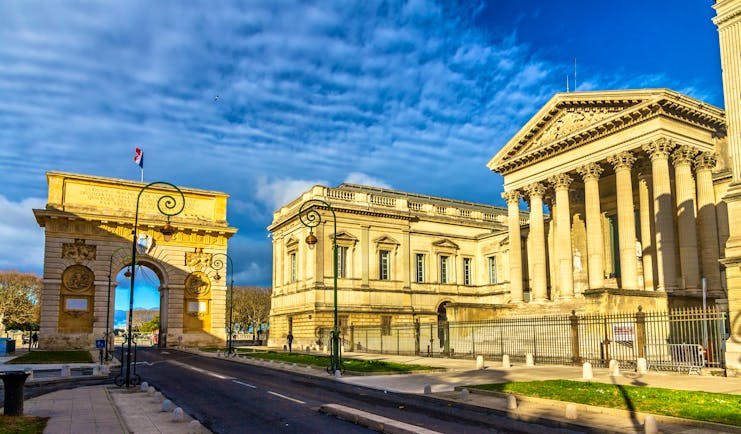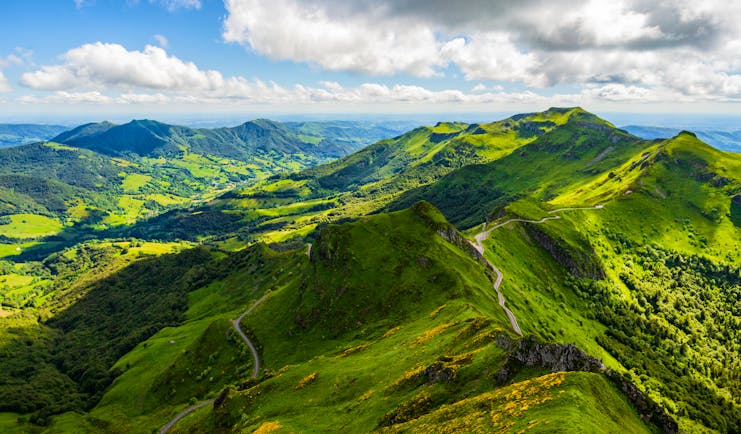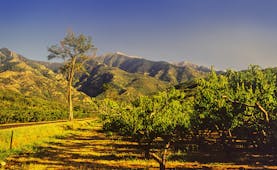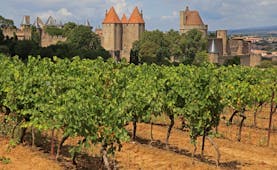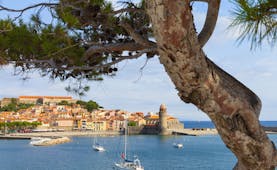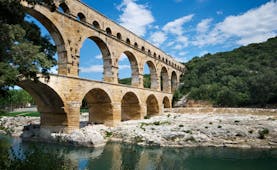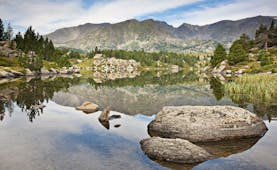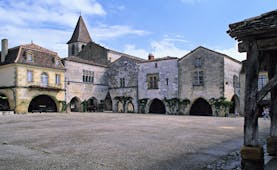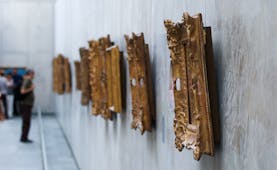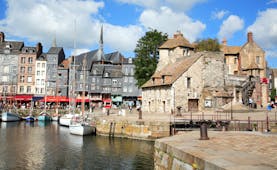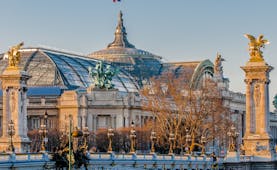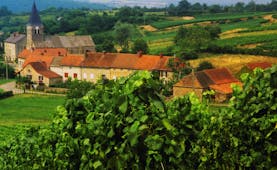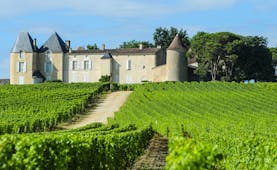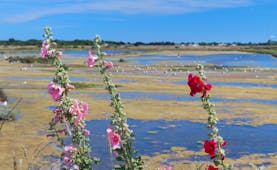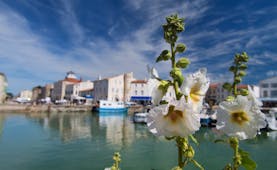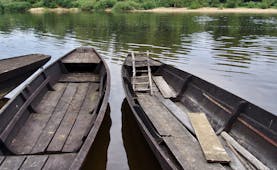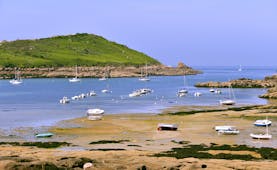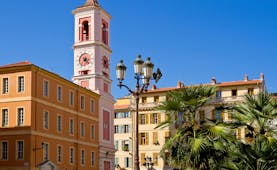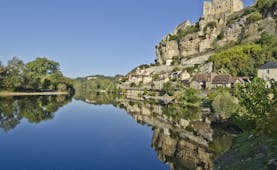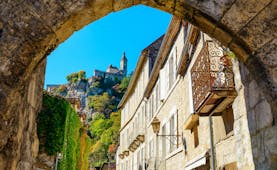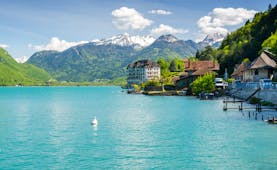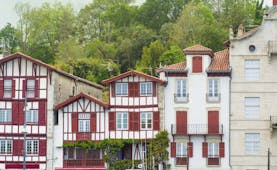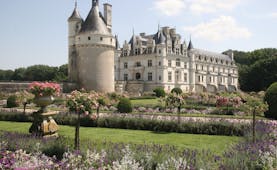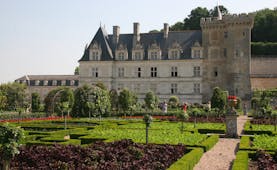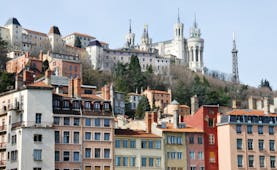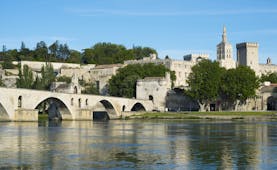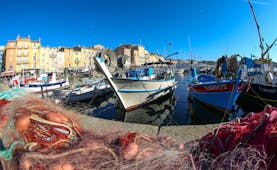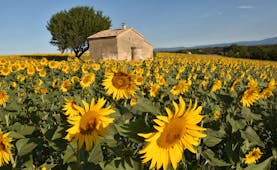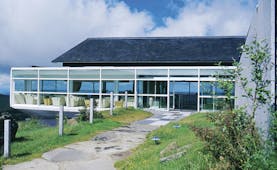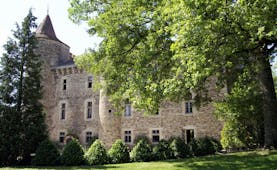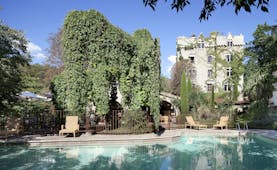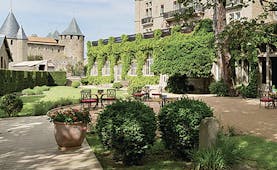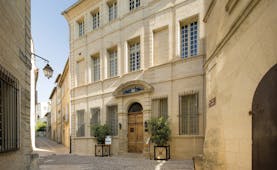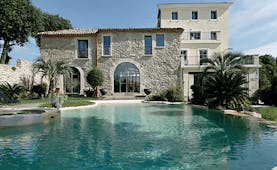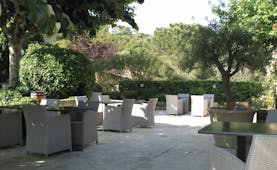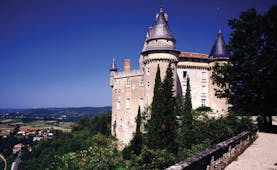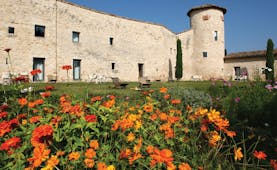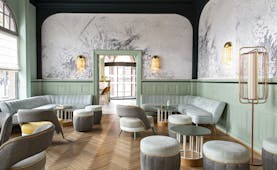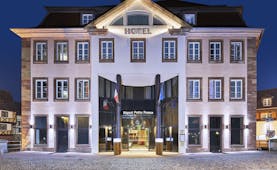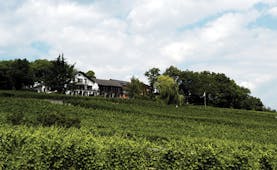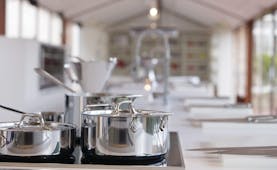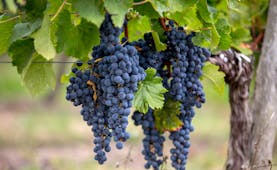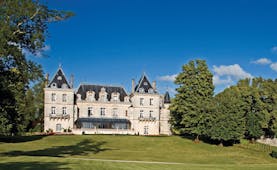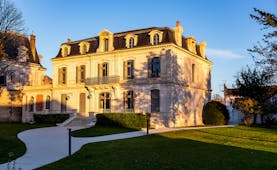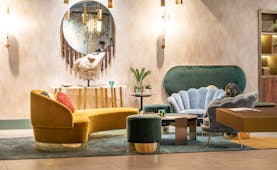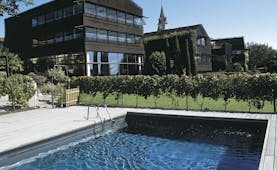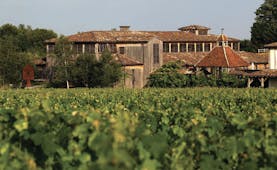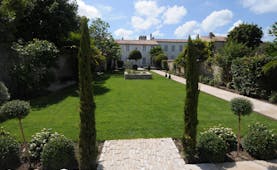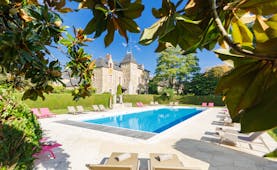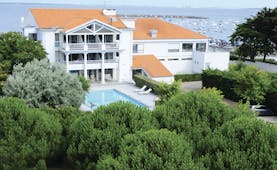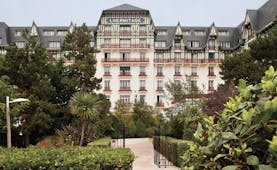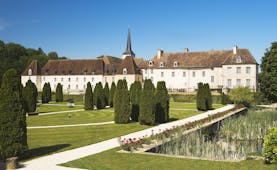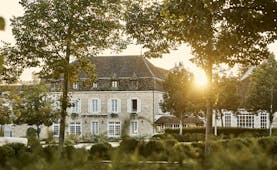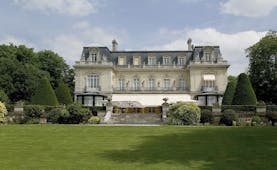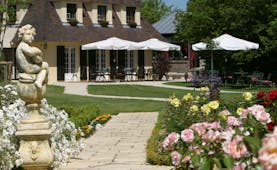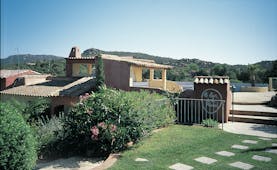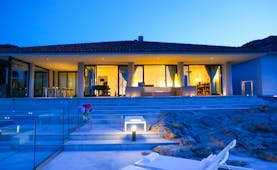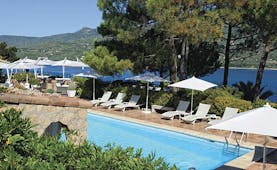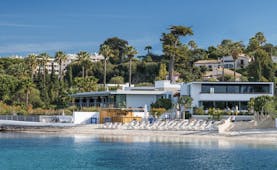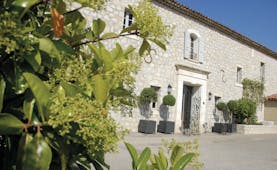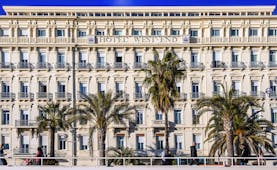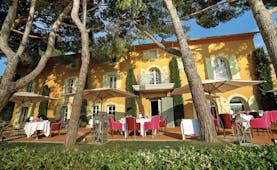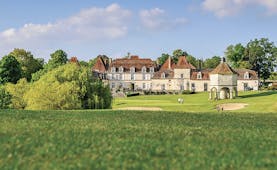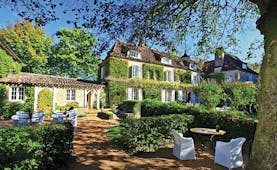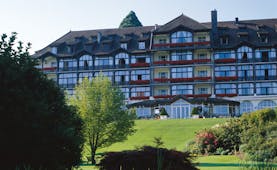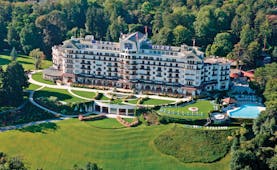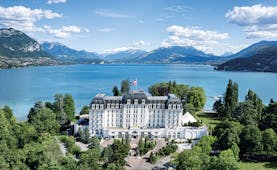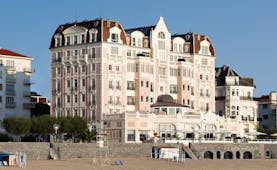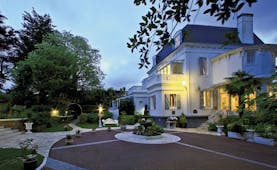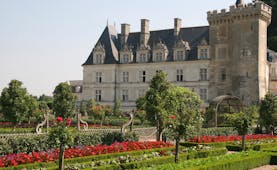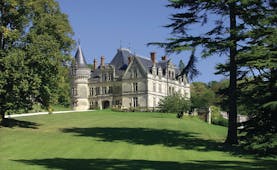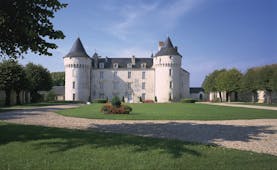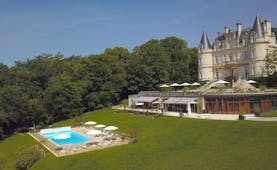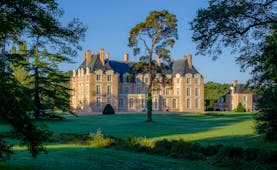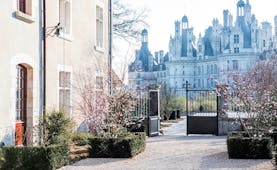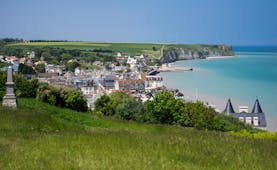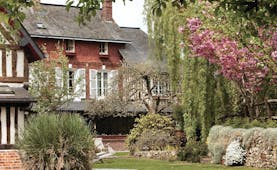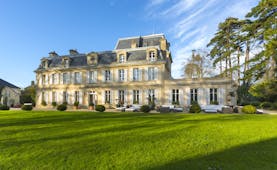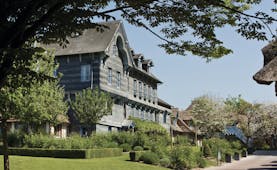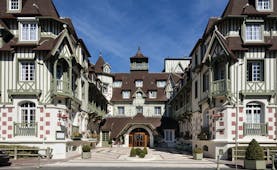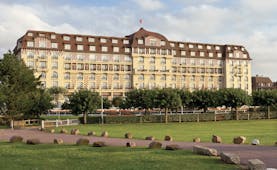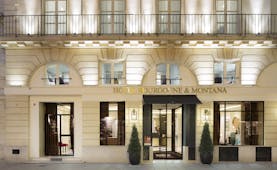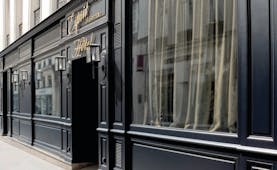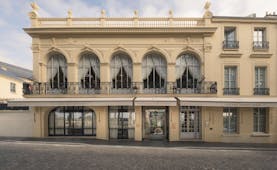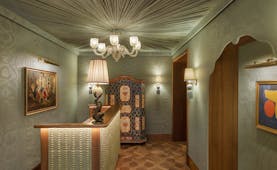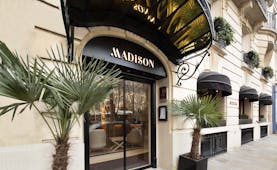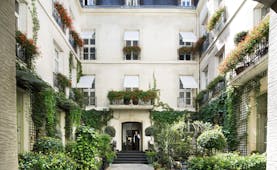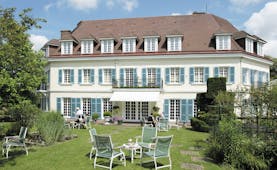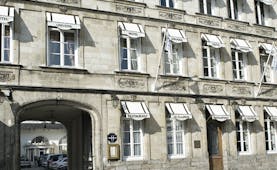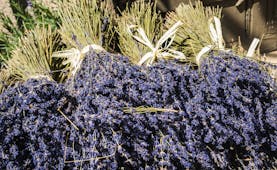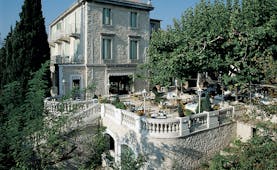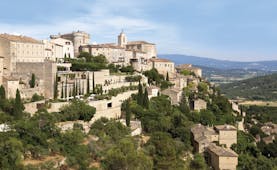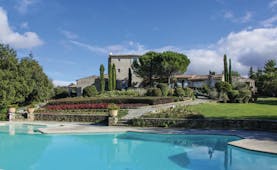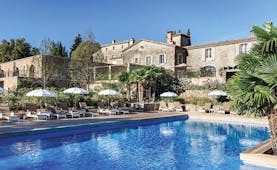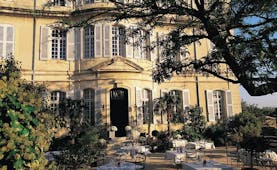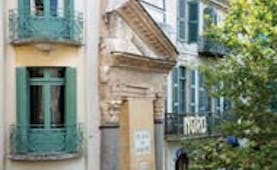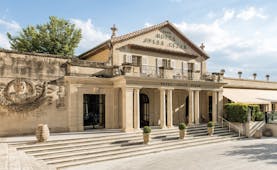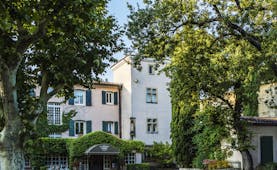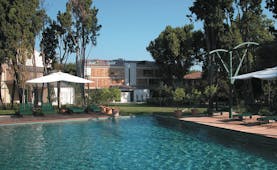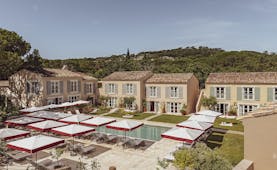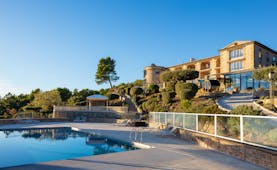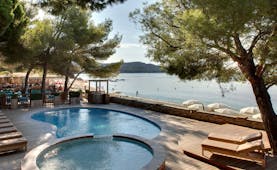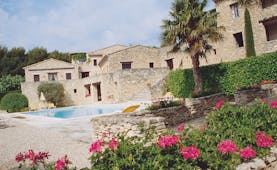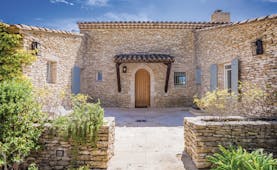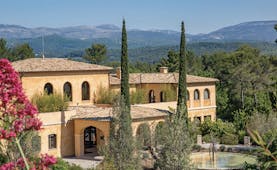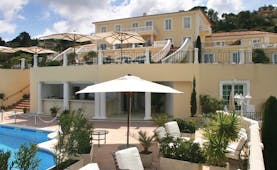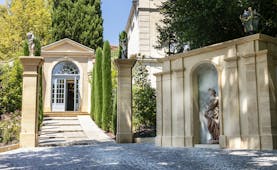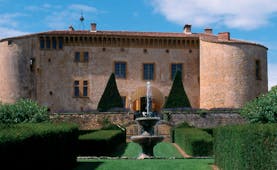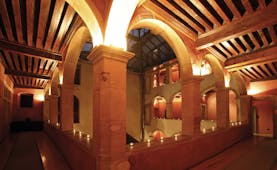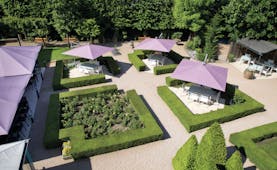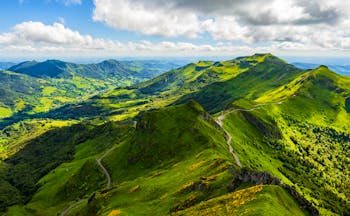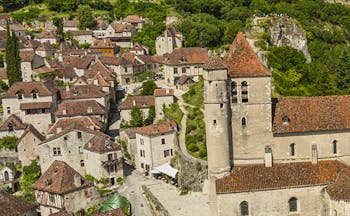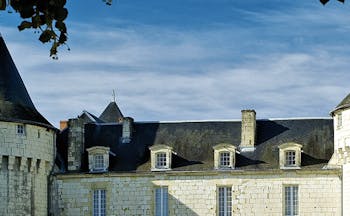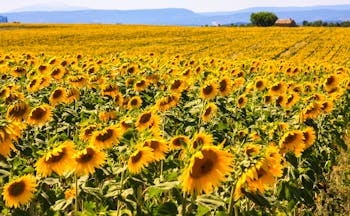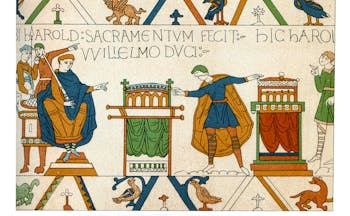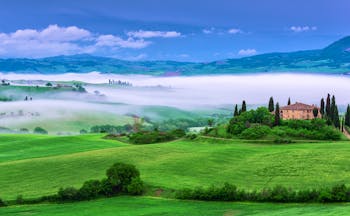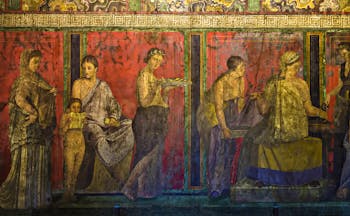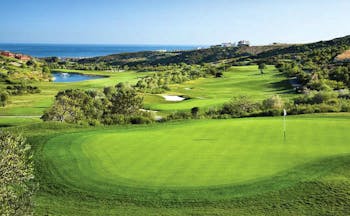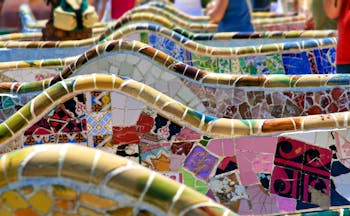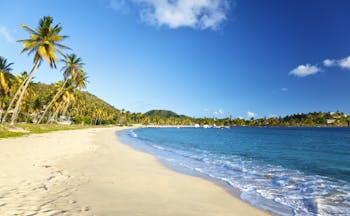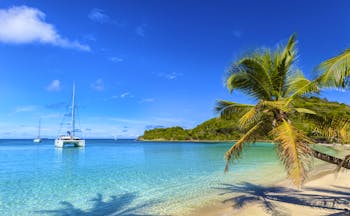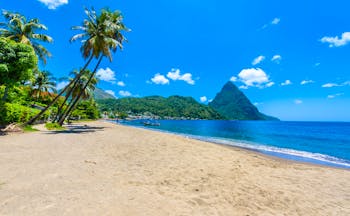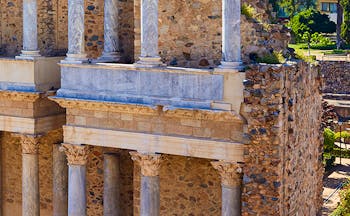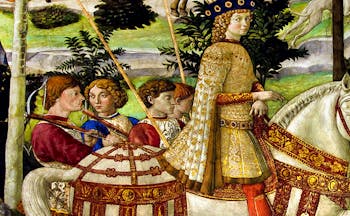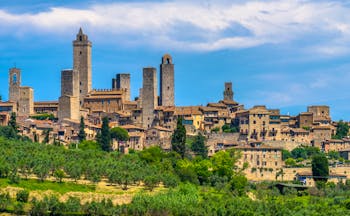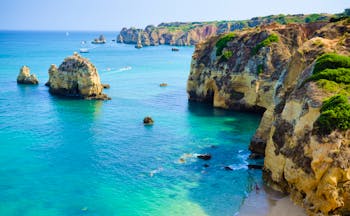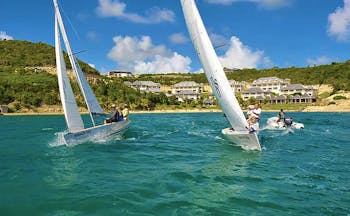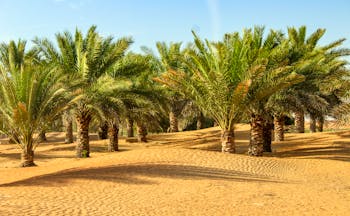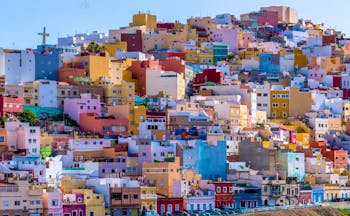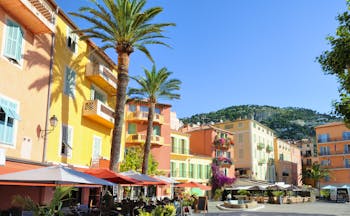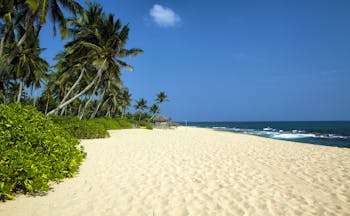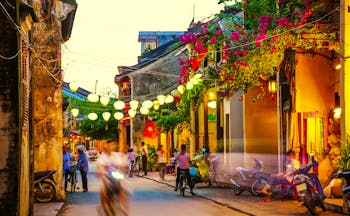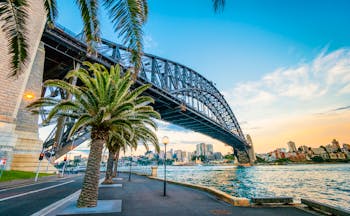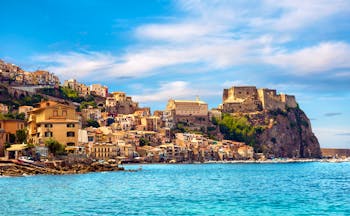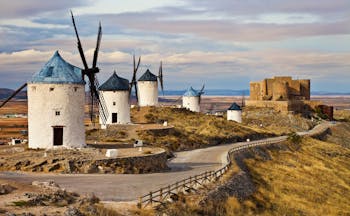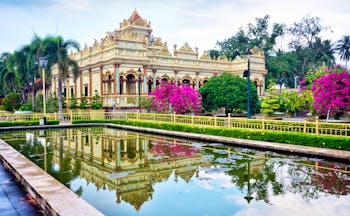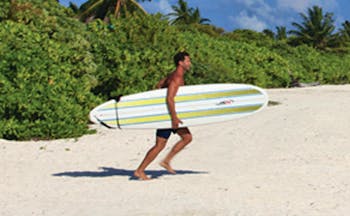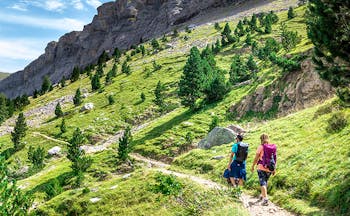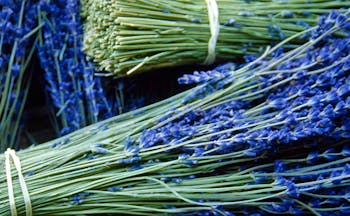Luxury France Auvergne to Languedoc fly-drive tailormade holiday: volcanic domes, valleys & fortresses
This 9-night fly-drive touring holiday takes you from the Auvergne with its volcanic domes and remote farmland, through the deep river valleys of the Lot and the Tarn, each containing gems of little villages and towns of cultural interest, exploring the produce of the land, be it the local wine of Gaillac and Minervois or the cheeses, truffles and chestnuts, to the fortress-city of Carcassonne and then to Montpellier in Languedoc. Your touring holiday starts in Lyon, where you collect your hire-car and drive for about two hours to your first stop at Bort-l’Etang. You have two nights here to explore the Auvergne perhaps venturing further into the Livradois-Forez natural park where you can hike, visit artisan producers or witness miles of natural landscape. Clermont-Ferrand is also an excursion possibility from here. Then you continue passing the volcanic domes the Auvergne is famous for, to head south to the deep river valley of the Lot and the Quercy natural park. Visit local markets, vineyards and the heritage site of Cahors. From the Lot you visit the Tarn, another river valley famous for its vineyards at Gaillac, perched villages such as Cordes-sur-Ciel and Castelnau-de-Montmirail. Nearby Albi was the home of Toulouse-Lautrec. South of Albi you enter the land of the Cathars of which the ruined fortified castles are witness today, to reach the magnificent city of Carcassonne where you spend two nights. You have a full day to explore the region around Carcassonne perhaps along the Canal du Midi or into the Corbieres vineyards to the south. On your last journey from Carcassonne to Montpellier, through the natural park of the Haut-Languedoc you see yet more gorges, hill-top villages, vines and olives, little towns and villages full of fascinating historical associations. Your final stop is near the capital of Languedoc, Montpellier, a lively city that is modern yet with well-preserved historic monuments and buildings. You return to London by air from Montpellier.
Highlights
Auvergne • Parc naturel regional Livradois-Forez • Parc naturel regional des Volcans d’Auvergne • Cahors • Parc naturel regional des Causses de Quercy • Tarn • Carcassonne • Parc naturel regional du Haut Languedoc • Montpellier
Day by day
You arrive in the city of Lyon, collect your hire-car and drive west towards Clermont-Ferrand through the Parc Naturel Regional Livradois-Forez, on the edge of which you spend two nights.
The regional park of the Livradois-Forez is one of the largest nature parks of France, situated on the eastern side of the Auvergne, it encompasses an astonishing variety of landscapes and scenery, with volcanic peaks, deep valleys, forests, marsh and agricultural land. There are numerous walking tracks, historic monuments and castles, local museums and artisan producers (wooden items, knives, enamel). Clermont-Ferrand sits just 40 minutes northwest and is perfect for a cultural day trip. Surrounded by dormant volcanoes, the buildings that line the streets of this city are built from black lava stone which gives Clermont-Ferrand an atmospheric and unusual look. The city holds a large total of 50 fountains and statues, such as the statue of Vercingetorix who led the Gauls to victory against Julius Caesar in 52BC, that act as centrepieces in the numerous squares. Architectural highlights include the Cathédrale Notre-Dame-de-l’Assomption, a gothic tour de force with towering black spires, and the Notre-Dame-du-Port basilica, with its beautiful mosaic details. Gastronomy is paramount in Auvergne culture, from the speciality cheeses, such as Cantal, Saint-Nectaire, Fourme d’Ambert, Bleu d’Auvergne, and Salers, to the cured meats sourced from the Salers cattle that are intensified with local hazelnuts, bilberries, or chestnuts. Another key ingredient to seek out is the Puy green lentil, central to Petit Salé, a typically Auvergne dish of salted pork belly. The Côtes d’Auvergne wines owe a lot of their success to the volcanic soil attributed to the Chaîne des Puys mountain range. The white wines are produced from the Chardonnay grape, the reds from the Gamay and Pinot Noir grapes, and rosé from Gamay exclusively. To taste the wine of the area, visit the boutique Cave Saint Verny, or visit the wine museum in Aubière to learn more about the process. The Montpeyroux vineyards, situated in one of France’s Most Beautiful Villages, are open for public visits.
Today we recommend that you don’t follow the most direct route which takes about 3 hours and 30 minutes, but instead, you take time to explore the Parc natural regional des Volcans d’Auvergne to the south-west of Clermont-Ferrand. It is here that some of the most spectacular domes of dormant volcanoes are to be found. Puy-de-Dome at 1465m is one of the best-known of the Auvergne’s dormant volcanoes and part of the UNESCO-listed Chaine des Puys. Then head south to Aurillace and then after Figeac you enter the Parc naturel regional des Causses du Quercy, which you drive through to Cahors. Your stop for the next two nights is just to the north of Cahors.
Surrounded by the River Lot on three sides the picturesque town of Cahors makes for an excellent choice to explore. Make sure to take in the famous Valentré Bridge with its three towers, built in the 14th century and now UNESCO World Heritage listed and visit the cathedral, an impressive building in the centre of the town. Wander down the charming mediaeval streets and relax in the shaded little squares perhaps discovering a quaint café or one of the many secret garden areas. On Wednesday and Saturday mornings enjoy Cahors market which is bursting with local and regional delicacies such as Rocamadour cheeses and Cahors wine, renowned for its dark colouring. If you are staying in July or August, be sure to experience the Cahors festival. The small village of Mercues and its market on Thursday mornings is also well worth a visit. Make the most of the picturesque scenery by visiting as many of these beautiful villages and medieval towns as you can on your short stay in the Lot Valley, including St Cirque-Lapopie and others along the valley of the Lot.
Today you continue to drive south through the Quercy to the region of the Tarn and your stop in the village of Cahuzac-sur-Vère is set in the heart of the Gaillac vineyards. You stay here for two nights.
The small commune of Cahuzac-sur-Vère is the quintessential rural French settlement, with its narrow winding streets and blond stone buildings, picturesque central square and war monument. The houses of the Cahuzacois cluster around the Catholic church of the same name as the commune, giving it a very mediaeval appearance. Stretching out on each side, however, is a landscape rich in exciting opportunities to explore. Montauban, less than an hour northwest of Cahuzac-sur-Vère is the second oldest of the bastides of southern France, founded in 1144AD. It was voted a French City of Art and History, with a city centre characterised by its towering castle, impressive bridge, and boulevards. Wine-tasting opportunities are available at the Domaine de Montels and the Mas des Anges, if you would like to sample the wine of the area. Alternatively, Montauban is known for its other culinary specialities, such as sugared almonds and biscuits with jam, not to mention the fabulous produce of its chocolatiers. Also nearby is Albi, a UNESCO World Heritage Site, and bursting with the remarkable history of France. The most immediate point of interest in this small town is its red-brick mediaeval cathedral, St. Cecilia’s. Witness how its imposing exterior blends into the delicate wood and stone decoration of its interior. Adorning the whole western wall are extensive murals depicting the Last Judgement. Just next door, the Bishop’s palace houses the Toulouse Lautrec museum, dedicated to the works of the post-impressionistic iconographer Henri de Toulouse-Lautrec. From outside the cathedral, you can make your way west to the square which overlooks the River Tarn or pass the museum to walk across the thousand-year-old Old Bridge. Albi retains the look and feel of its traditional way of life. Visit the hill-top town of Cordes-sur-Ciel and take the time to wander down the streets of one of the most spectacular villages.
You drive through the wine-town of Gaillac today, heading for Castres, on the banks of the River Agout. There are interesting part-timbered, overhanging houses here that used to belong to the tanners and dyers of the town. There is also the Goya museum, located in a former episcopal palace. Outside the palace are magnificent parterres designed by Le Notre. South of Castres you cross into the Parc naturel regional du Haut Languedoc and then enter Cathar country. North of Carcassonne it’s worth taking a detour to visit the chateaux at Lastours, where there are four Cathar castles. You stay in Carcassonne for two nights.
You have a full day in Carcassonne. There is time to explore the city itself and perhaps to venture outside. The Gallo-Roman upper town of Carcassonne is now a UNESCO World Heritage Site and historically of great significance in France. Walk along the city walls, past the castle’s amphitheatre, the basilica, and its 53 watchtowers, before making your way into the 12th century Château Comtal to view its archaeological exhibits and tour its inner ramparts. The lower Carcassonne town subverts its title as a city, instead offering a peaceful, somewhat sleepy atmosphere, with a central square that holds a weekly market and several cafés. From Place Carnot, walk further out into the town centre to discover the quaint individual stores that sell unique gifts, or La Ferme, which sells fine food and wines. For a stunning experience of the region’s châteaux, drive south to the Cathar Castles that pepper the dramatic landscape and guard its deep valleys, particularly the Château de Peyrepertuse. The Canal du Midi is perfect for a long afternoon stroll or book a boat trip one afternoon to intensify the atmosphere of Carcassonne from the water. Beyond the walls of La Cité lie the wine regions of Minervois, to the north, and Corbières, to the south. If wine-tasting appeals, head into one of the many châteaux dotted around the countryside of these two regions. The Château Canet is the perfect spot to try some of the Muscat wines so typical of the Minervois region, as well as the olives from its three olive groves. Château Rives-Blanques in Cépie produces wines made available all over the world that you are encouraged by your warm hosts to taste on your visit. The less visited area of Saint Chinian, situated at the foothills of the Black Mountains and in the Parc Naturel Regional du Haut Languedoc, is worth a visit, known as it is for high quality produce; perhaps stop off at the Château de Combebelle.
Your route today should take you north-east first to the town of Minerve and the Minervois wine producing region, a patchwork landscape of small vineyards and olive trees dotted with pretty villages. This is at the southern end of the Parc naturel regional du Haut Languedoc which you then cross following a scenic route through wooded hills and valleys, with the road twisting and turning as it follows the course of the River Orb, in the direction of Clermont-l’Herault. Near Clermont-l'Herault, surrounded by rolling hills of vines and olives, is the strange-sounding place of Manufacture Royale, which was where royal sheets were made in the village of Villeneuvette in the 18th century. To the north is the ‘Grand Site’ of the Lac Salagou and a short distance beyond Clermont-l’Herault is the astonishing village of Saint-Guilhem-le-Desert, designated as one of the most beautiful villages in France. This village is at the heart of the Herault valley with its deep gorges, olive trees and vines. Continue to your overnight stop on the outskirts of Montpellier, where you stay for one night.
Depending on the time of your flight back to London, you may have time to explore the city of Montpellier. Montpellier has mediaeval streets and wide boulevards, modern tram lines designed by Christian Lacroix, an Arc de Triomphe and a statue of Louis XIV on horseback, a Roman aqueduct and Place de la Comedie, beautiful private mansions and the Musee Fabre.
We had a wonderful holiday which exceeded our expectations. Great hotels with a good itinerary. We wouldn't hesitate to use your services again.Mrs J, June 2025
Holiday price guide Prices from £2,540 per person based on two people sharing a double or twin room.
Holiday Code FRFD07
Call us on 01392 441245
Luxury France Auvergne to Languedoc fly-drive tailormade holiday: volcanic domes, valleys & fortresses
You arrive in the city of Lyon, collect your hire-car and drive west towards Clermont-Ferrand through the Parc Naturel Regional Livradois-Forez, on the edge of which you spend two nights.
The regional park of the Livradois-Forez is one of the largest nature parks of France, situated on the eastern side of the Auvergne, it encompasses an astonishing variety of landscapes and scenery, with volcanic peaks, deep valleys, forests, marsh and agricultural land. There are numerous walking tracks, historic monuments and castles, local museums and artisan producers (wooden items, knives, enamel). Clermont-Ferrand sits just 40 minutes northwest and is perfect for a cultural day trip. Surrounded by dormant volcanoes, the buildings that line the streets of this city are built from black lava stone which gives Clermont-Ferrand an atmospheric and unusual look. The city holds a large total of 50 fountains and statues, such as the statue of Vercingetorix who led the Gauls to victory against Julius Caesar in 52BC, that act as centrepieces in the numerous squares. Architectural highlights include the Cathédrale Notre-Dame-de-l’Assomption, a gothic tour de force with towering black spires, and the Notre-Dame-du-Port basilica, with its beautiful mosaic details. Gastronomy is paramount in Auvergne culture, from the speciality cheeses, such as Cantal, Saint-Nectaire, Fourme d’Ambert, Bleu d’Auvergne, and Salers, to the cured meats sourced from the Salers cattle that are intensified with local hazelnuts, bilberries, or chestnuts. Another key ingredient to seek out is the Puy green lentil, central to Petit Salé, a typically Auvergne dish of salted pork belly. The Côtes d’Auvergne wines owe a lot of their success to the volcanic soil attributed to the Chaîne des Puys mountain range. The white wines are produced from the Chardonnay grape, the reds from the Gamay and Pinot Noir grapes, and rosé from Gamay exclusively. To taste the wine of the area, visit the boutique Cave Saint Verny, or visit the wine museum in Aubière to learn more about the process. The Montpeyroux vineyards, situated in one of France’s Most Beautiful Villages, are open for public visits.
Today we recommend that you don’t follow the most direct route which takes about 3 hours and 30 minutes, but instead, you take time to explore the Parc natural regional des Volcans d’Auvergne to the south-west of Clermont-Ferrand. It is here that some of the most spectacular domes of dormant volcanoes are to be found. Puy-de-Dome at 1465m is one of the best-known of the Auvergne’s dormant volcanoes and part of the UNESCO-listed Chaine des Puys. Then head south to Aurillace and then after Figeac you enter the Parc naturel regional des Causses du Quercy, which you drive through to Cahors. Your stop for the next two nights is just to the north of Cahors.
Surrounded by the River Lot on three sides the picturesque town of Cahors makes for an excellent choice to explore. Make sure to take in the famous Valentré Bridge with its three towers, built in the 14th century and now UNESCO World Heritage listed and visit the cathedral, an impressive building in the centre of the town. Wander down the charming mediaeval streets and relax in the shaded little squares perhaps discovering a quaint café or one of the many secret garden areas. On Wednesday and Saturday mornings enjoy Cahors market which is bursting with local and regional delicacies such as Rocamadour cheeses and Cahors wine, renowned for its dark colouring. If you are staying in July or August, be sure to experience the Cahors festival. The small village of Mercues and its market on Thursday mornings is also well worth a visit. Make the most of the picturesque scenery by visiting as many of these beautiful villages and medieval towns as you can on your short stay in the Lot Valley, including St Cirque-Lapopie and others along the valley of the Lot.
Today you continue to drive south through the Quercy to the region of the Tarn and your stop in the village of Cahuzac-sur-Vère is set in the heart of the Gaillac vineyards. You stay here for two nights.
The small commune of Cahuzac-sur-Vère is the quintessential rural French settlement, with its narrow winding streets and blond stone buildings, picturesque central square and war monument. The houses of the Cahuzacois cluster around the Catholic church of the same name as the commune, giving it a very mediaeval appearance. Stretching out on each side, however, is a landscape rich in exciting opportunities to explore. Montauban, less than an hour northwest of Cahuzac-sur-Vère is the second oldest of the bastides of southern France, founded in 1144AD. It was voted a French City of Art and History, with a city centre characterised by its towering castle, impressive bridge, and boulevards. Wine-tasting opportunities are available at the Domaine de Montels and the Mas des Anges, if you would like to sample the wine of the area. Alternatively, Montauban is known for its other culinary specialities, such as sugared almonds and biscuits with jam, not to mention the fabulous produce of its chocolatiers. Also nearby is Albi, a UNESCO World Heritage Site, and bursting with the remarkable history of France. The most immediate point of interest in this small town is its red-brick mediaeval cathedral, St. Cecilia’s. Witness how its imposing exterior blends into the delicate wood and stone decoration of its interior. Adorning the whole western wall are extensive murals depicting the Last Judgement. Just next door, the Bishop’s palace houses the Toulouse Lautrec museum, dedicated to the works of the post-impressionistic iconographer Henri de Toulouse-Lautrec. From outside the cathedral, you can make your way west to the square which overlooks the River Tarn or pass the museum to walk across the thousand-year-old Old Bridge. Albi retains the look and feel of its traditional way of life. Visit the hill-top town of Cordes-sur-Ciel and take the time to wander down the streets of one of the most spectacular villages.
You drive through the wine-town of Gaillac today, heading for Castres, on the banks of the River Agout. There are interesting part-timbered, overhanging houses here that used to belong to the tanners and dyers of the town. There is also the Goya museum, located in a former episcopal palace. Outside the palace are magnificent parterres designed by Le Notre. South of Castres you cross into the Parc naturel regional du Haut Languedoc and then enter Cathar country. North of Carcassonne it’s worth taking a detour to visit the chateaux at Lastours, where there are four Cathar castles. You stay in Carcassonne for two nights.
You have a full day in Carcassonne. There is time to explore the city itself and perhaps to venture outside. The Gallo-Roman upper town of Carcassonne is now a UNESCO World Heritage Site and historically of great significance in France. Walk along the city walls, past the castle’s amphitheatre, the basilica, and its 53 watchtowers, before making your way into the 12th century Château Comtal to view its archaeological exhibits and tour its inner ramparts. The lower Carcassonne town subverts its title as a city, instead offering a peaceful, somewhat sleepy atmosphere, with a central square that holds a weekly market and several cafés. From Place Carnot, walk further out into the town centre to discover the quaint individual stores that sell unique gifts, or La Ferme, which sells fine food and wines. For a stunning experience of the region’s châteaux, drive south to the Cathar Castles that pepper the dramatic landscape and guard its deep valleys, particularly the Château de Peyrepertuse. The Canal du Midi is perfect for a long afternoon stroll or book a boat trip one afternoon to intensify the atmosphere of Carcassonne from the water. Beyond the walls of La Cité lie the wine regions of Minervois, to the north, and Corbières, to the south. If wine-tasting appeals, head into one of the many châteaux dotted around the countryside of these two regions. The Château Canet is the perfect spot to try some of the Muscat wines so typical of the Minervois region, as well as the olives from its three olive groves. Château Rives-Blanques in Cépie produces wines made available all over the world that you are encouraged by your warm hosts to taste on your visit. The less visited area of Saint Chinian, situated at the foothills of the Black Mountains and in the Parc Naturel Regional du Haut Languedoc, is worth a visit, known as it is for high quality produce; perhaps stop off at the Château de Combebelle.
Your route today should take you north-east first to the town of Minerve and the Minervois wine producing region, a patchwork landscape of small vineyards and olive trees dotted with pretty villages. This is at the southern end of the Parc naturel regional du Haut Languedoc which you then cross following a scenic route through wooded hills and valleys, with the road twisting and turning as it follows the course of the River Orb, in the direction of Clermont-l’Herault. Near Clermont-l'Herault, surrounded by rolling hills of vines and olives, is the strange-sounding place of Manufacture Royale, which was where royal sheets were made in the village of Villeneuvette in the 18th century. To the north is the ‘Grand Site’ of the Lac Salagou and a short distance beyond Clermont-l’Herault is the astonishing village of Saint-Guilhem-le-Desert, designated as one of the most beautiful villages in France. This village is at the heart of the Herault valley with its deep gorges, olive trees and vines. Continue to your overnight stop on the outskirts of Montpellier, where you stay for one night.
Depending on the time of your flight back to London, you may have time to explore the city of Montpellier. Montpellier has mediaeval streets and wide boulevards, modern tram lines designed by Christian Lacroix, an Arc de Triomphe and a statue of Louis XIV on horseback, a Roman aqueduct and Place de la Comedie, beautiful private mansions and the Musee Fabre.
We had a wonderful holiday which exceeded our expectations. Great hotels with a good itinerary. We wouldn't hesitate to use your services again.Mrs J, June 2025
Holiday price guide Prices from £2,540 per person based on two people sharing a double or twin room.
Holiday Code FRFD07
Our prices include
● Scheduled flight with British Airways from London to Lyon, Montpellier to London
● Hire of a group B car for the duration of the holiday
● 2 nights’ bed and breakfast in a Traditional double room at the Château de Codignat in Bort-l’Etang, near Clermont-Ferrand
● 2 nights’ bed and breakfast in a Classic double room at Chateau de Mercues near Cahors
● 2 nights’ bed and breakfast in a Comfort double room at the Château des Salettes in Cahuzac-sur-Vère, near Gaillac
● 2 nights' bed and breakfast in a Classic double room at the Hotel de la Cite in Carcassonne
● 1 night’s bed and breakfast in a Deluxe double room at the Domaine de Verchant, near Montpellier
● Concierge service and Expressions Holidays regional helpful hints
Our prices do not include
● Early check-in or late check-out at any hotels (although we can arrange this on request at additional cost)
● Any other services not mentioned above, such as transfers and meals except breakfast at hotels
● Personal holiday insurance. This is essential and cover should be in place from when you book the holiday.
● Local tourist tax, usually between Euros 1 and 3 per person per night, and payable locally to the hotel
Additional information
Driving times for this touring holiday
Lyon to Bort-l’Étang 2 hours
Bort-l’Étang to Mercues 3 hours 30 minutes
Mercues to Gaillac 1 hour 30 minutes
Gaillac to Carcassonne 1 hour 45 minutes
Carcassonne to Toulouse 1 hour and 30 minutes
Call us on 01392 441245
Luxury France Auvergne to Languedoc fly-drive tailormade holiday: volcanic domes, valleys & fortresses

Château de Codignat is an exclusive 5-star hotel in a blissfully secluded location. The gourmet cuisine, opulent interiors and 15-hectares of pristine grounds afford guests a truly tranquil and indulgent experience.
Traditional double room

The Château de Mercuès is an exclusive 4-star hotel in a beautiful natural location. The Michelin-star restaurant, working vineyard and super spa facilities afford guests a truly luxurious and secluded experience.
Classic double room
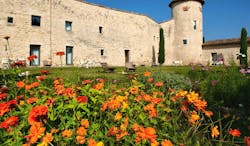
Château des Salettes in Tarn is an exclusive, 4-star château-hotel in a beautiful secluded location. The excellent spa facilities and refined cuisine afford guests a luxuriously indulgent countryside retreat.
Comfort double room
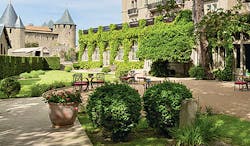
Hotel de la Cité is a luxury 5-star hotel in an excellent location in the heart of the mediaeval city. Delicious gourmet cuisine and pampering spa facilities afford guests a relaxing and indulgent experience.
Classic double room
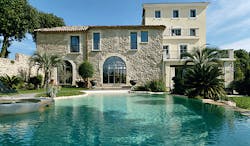
Le Domaine de Verchant is an exclusive 5-star hotel in a beautifully secluded location. Gourmet cuisine, excellent spa facilities and beautiful grounds and vineyards afford guests a truly relaxing and idyllic retreat.
Deluxe double room
We had a wonderful holiday which exceeded our expectations. Great hotels with a good itinerary. We wouldn't hesitate to use your services again.Mrs J, June 2025
Holiday price guide Prices from £2,540 per person based on two people sharing a double or twin room.
Holiday Code FRFD07
Call us on 01392 441245
Luxury France Auvergne to Languedoc fly-drive tailormade holiday: volcanic domes, valleys & fortresses
About Central France & Auvergne
An Expressions tailor-made holiday to Auvergne combines a dramatic landscape with mediaeval attractions, transporting visitors back in time for an authentic and enchanting experience. Auvergne's landscape is dramatic and evocative, its rolling expanse punctuated by mountainous inclines and craggy gorges. Shaped by ancient volcanic activity, this landscape has spawned dynamic towns and villages, which are moulded around this wild natural environment. Hilltop towns and monuments still adorn these peaks, providing a fascinating glance back to mediaeval life and prompt consideration of how the resident communities have developed through the centuries. There is much to explore during a holiday in Auvergne, including remnants of mediaeval architecture with churches and chateaux emphasising the region's vivid historical context. Explore this enchanting atmosphere when visiting the capital of Clermont-Ferrand, home to the Romanesque Notre Dame du Port, and Le Puy de Velay, with its striking cathedral -- both of which are classified as UNESCO heritage sites. Our luxury hotels in Auvergne include charming thatched cottages, secluded chateaux and gastronomic delights. An excellent way to explore this region is with a self-drive touring holiday, perhaps discovering the gastronomy of Tarn and the Auvergne, or perhaps also visiting other parts of central France including the Dordogne.
Highlights of Central France & Auvergne
Mediaeval churches and chateaux, vineyards, mountainous and volcanic scenery, Puy de Dome Mountain, the lace-making centre of Le Puy de Velay with its cathedral, a UNESCO heritage site, and St Michel's Chapel. Capital Clairmont-Ferrand, with its gothic cathedral and Notre-Dame du Port, also an UNESCO heritage site.
Climate in Central France & Auvergne
The climate is fairly mild throughout the year, peaking between June and September, when average temperatures stretch beyond the mid-twenties.
Call us on 01392 441245
Luxury France Auvergne to Languedoc fly-drive tailormade holiday: volcanic domes, valleys & fortresses
About Tarn and Lot
An Expressions tailor-made holiday to Tarn and Lot is a chance to explore an area of southern France, including Albi, the birthplace of Toulouse Lautrec which is a cathedral city on the banks of the River Tarn with a strong artistic and architectural tradition. The countryside in Tarn and Lot is green and rolling, with vineyards, river valleys and hill top villages and fortresses, such as Cordes. The town of Cahors is at the heart of the beautifully dramatic Lot valley surrounded by rolling wooded hills and vineyards. The valley itself is dotted with mediaeval towns. The area is noted for its wine and the vineyards of course can be visited. An excellent idea is to combine a holiday in Tarn and Lot with a stay in Auvergne to the north-east, enjoying a gastronomic tour around the two regions. Alternatively, the region can be included in a self-drive touring holiday through the southwest of France, or around the Dordogne, Basque Country and Massif Central. The area can also be reached by train, allowing you to enjoy a rail holiday following in the footsteps of Toulouse Lautrec.
Highlights of Tarn and Lot
Cultural highlights include music festival in Toulouse, Limoux wine, the ruined fortresses of the Cathars, the craggy valley of Aveyron, the mediaeval fortified village of Cordes, Gaillac wine, the Charcuterie of Lacaune, and the Goya museum at Castres.
Tarn and Lot Climate
Average air temperatures in Centigrade: Jan 12.4, Feb 11.5, Mar 12.5, Apr 17.6, May 20.1, Jun 26.5, Jul 28.4, Aug 28.1, Sep 26.1, Oct 21.1, Nov 15.8, Dec 13.5. Source: Direction de la Meteorologique de France.


